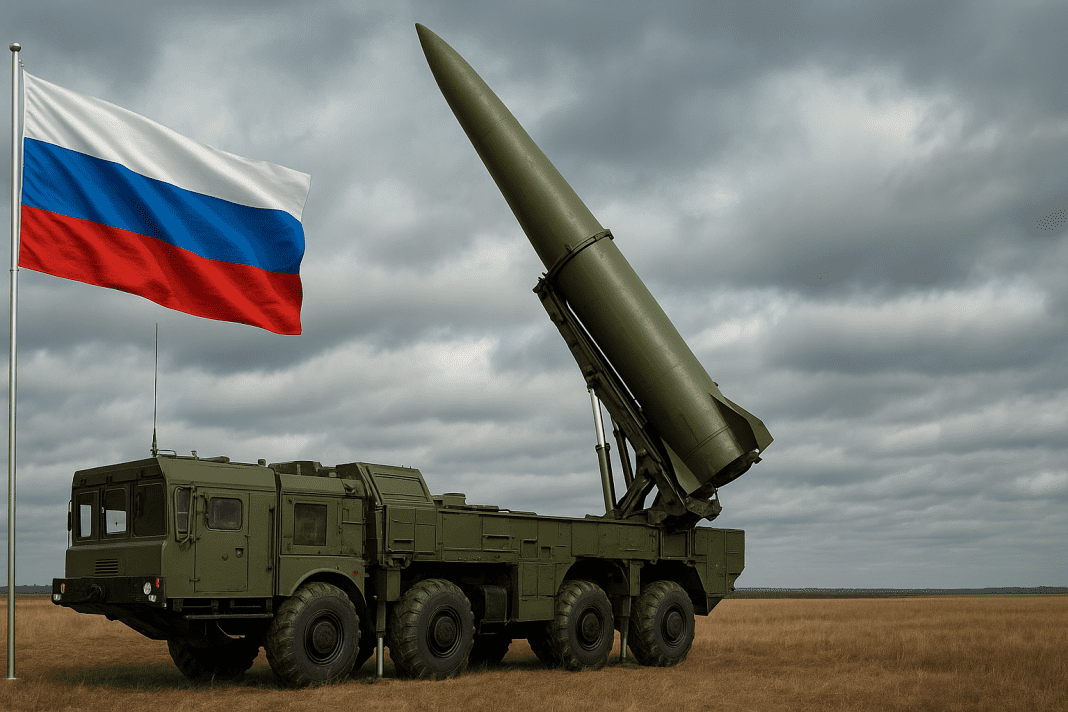Russia has confirmed that it continued missile development for intermediate-range and shorter-range systems even during a moratorium on their deployment. Russian Deputy Foreign Minister Sergei Ryabkov made this announcement in an interview with the state-run Rossiya-1 broadcaster, RIA news agency reported.
Russia’s Statement on Missile Development
Ryabkov explained that when the moratorium was first announced, Russia clearly stated that it applied only to the deployment of missiles. It did not mean that work on research and missile development would stop. As a result, Russia did not place these missiles into active service, but it continued their design, testing, and production without interruption.
The deputy minister said that Russia used the period of restricted deployment to make significant progress in missile development and to build what he described as a “fairly substantial arsenal.” He stated that Russia now has these missile systems ready, thanks to the steady progress made during the moratorium years.
This statement confirms that even when officials paused deployment, Russia’s defense industry actively improved technology, refined designs, and expanded production capacities for these advanced weapons. It also shows that the country’s military capabilities did not freeze during this time but instead quietly grew stronger.
Russia’s 35.5-Meter RS-28 Sarmat: The Longest Missile That Could Change Global Military Dynamics
Lifting of the Moratorium and Missile Development Progress
Earlier this month, Russia announced it was lifting its “unilateral moratorium” on deploying intermediate-range missiles. Officials said this was a necessary reaction to military moves made by the United States and its allies. The decision now allows Russia to officially place into service missile systems it already created and tested during the moratorium period.
Officials initially presented the moratorium, which remained in place for several years, as a step toward reducing tensions in international security. However, Ryabkov’s statement reveals that the pause in deployment did not mean a pause in missile development. Instead, Russian defense engineers and scientists continued to work on upgrading missile designs, increasing their accuracy, and improving their operational readiness.
Silent Sanctions Failure? Russia’s Banderol Missile Assembled with 23 Foreign Components
Reports suggest that the missile development program during the moratorium was extensive and well-organized. Research facilities and production plants carried out continuous work to ensure that once political conditions changed, deployment could happen quickly. By the time the moratorium ended, Russia had in hand a collection of newly developed missile systems capable of meeting its strategic needs.
The lifting of the moratorium marks the official point where these developed systems can now be positioned and made operational. While the announcement has attracted attention globally, it also underscores the fact that technological and production activities in the missile sector did not slow down during the period of limited deployment.
Background on the INF Treaty and Its Breakdown
The history of restrictions on intermediate-range missiles dates back to the Cold War. In 1987, the Soviet Union and the United States signed the Intermediate-Range Nuclear Forces (INF) Treaty. This landmark agreement required both nations to destroy all ground-launched ballistic and cruise missiles with ranges between 500 and 5,500 kilometers. At the time, it was celebrated as a sign that tensions between the two superpowers were easing.
The treaty led to the removal of thousands of missiles from both countries’ arsenals, but over the years, relations between Russia and the United States grew more strained. Washington accused Moscow of violating the treaty by secretly developing prohibited systems — an accusation that Russia firmly denied.
In 2019, under then-U.S. President Donald Trump, the United States formally withdrew from the INF Treaty, citing these alleged violations as the main reason. The withdrawal removed the legal restrictions on both sides, effectively allowing the resumption of activities related to intermediate-range missile production and testing.
Alarms Before Dawn: Russia’s Missile Attack on Kyiv Leaves 6 Injured and City in Panic
Following the U.S. withdrawal, Russia declared a moratorium on deployment, saying it would not be the first to place such missiles in Europe or other regions unless the United States did so. However, as Ryabkov has now confirmed, missile development continued throughout this period, ensuring that Russia’s arsenal remained modern and capable.
The combination of uninterrupted missile development and the recent lifting of the moratorium now means that Russia holds a significantly upgraded missile capability. This situation is rooted in decades of evolving arms control agreements, political disagreements, and rapid advances in missile technology.
